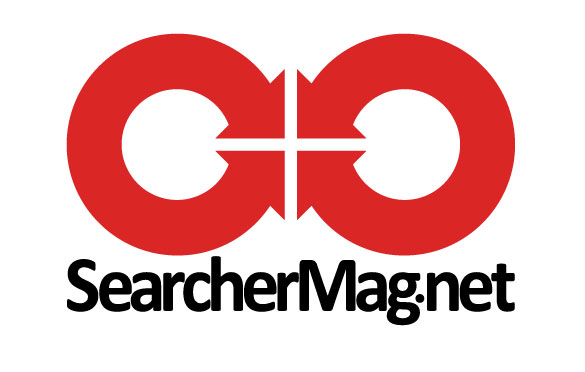Cold emailing can be tricky. In fact, there are many times people give up before they even start. However, if you approach it properly, you can get some amazing results. But, the key is knowing how to finely craft the approach and avoid the spam bin and other pitfalls.
When crafting an effective cold email, you must ask yourself some questions. Does the initial line capture the reader’s attention? Have you made your product pitch appealing and sexy? Is the introductory paragraph specific enough? Did you consider all the technicalities around your domain email to avoid hitting the spam bin? The final goal of doing all of these is to get your cold email delivered, opened, read, and, most importantly, responded to.
Cold emails, on the other hand, might be a goldmine for brand new customers. However, they might be an embarrassing flop of a disaster, a waste of time and resources. The trick is to take into account all aspects and approach it with more of a plan rather than just throwing some words on a screen and hitting send. Before you start, it is important that you take the time, don’t rush!! A cold email list is something that you’ll need to warm up, and with each try, you are getting dangerously closer to the black list if not done properly. You may think that you can try again and again, but sending hundreds of emails per day and receiving no responses always leads to the same place — the Blacklist. The blacklist is something that every business doing email campaigns wants to avoid.
Some Things to Keep in Mind When Cold Emailing
Instead of a firm, the communication should come from a specific salesperson. Cold emails are all about creating human relationships with prospects, and the first chance for a salesperson to do so is in the “from” line.
The subject line of the email must be eye-catching. Subject lines are your best opportunity of enticing someone to even open your email, let alone respond to it, so give them considerable consideration. At the very least, keep your subject line short and include anything that will catch the prospect’s attention, such as their name or the name of their company. (Personalized subject lines in emails are 26% more likely to get opened!)
You should add a concise body copy on the inside of the email—basically your elevator pitch. Nobody has time to read a book. This copy should incorporate all of your research and explain why you want to work with this specific person. You should truly feel that your service will benefit them and understand why at the end of the day. Being able to express it in a cold email will help you appear more trustworthy to your prospect. Remember, this doesn’t have to be in one email. You can create a series of emails. More on that later!
You can develop trust with your prospect by listing any large clientele you have. But don’t boast; instead, tell your prospect that you and the
company you work for is both legitimate.
Make sure your email contains a clear call to action (CTA). Tell your prospect exactly what action you want them to take next, and make it as simple as possible. Do you want them to complete a form? Give them a direct link to that form. Or, even better, integrate the form directly into your email. Again, we will talk about this in further detail later as well. There are many dos and don’ts when it comes to CTAs.
Finally, keep in mind that having only one CTA is part of having a clear CTA. The advantage of using only one CTA is that it allows you to keep your email concise and to the point.
How Can You Persuade Someone In A Cold Email?
It all boils down to having a solid understanding of your buyer personas. Consider their pain point, the solutions they may have attempted without success, or their aspirations. The more you can delve into ‘what’ they might be looking for and position your email to deliver value, the more likely they will open and engage with the material.
Some information that you might offer as initiatives, for example, would be to send a link to a blog post, links to specific current podcasts, and free downloads. In this approach, the goal is to provide potential customers with something of value that will help them recognize that you are a reputable source they can rely on (and that can solve their problem).
Remember that there is a significant difference between cold and warm emails. When your prospect is a warm lead, you can take a different approach to the email interaction. When it comes to cold emails, you must focus on addressing their most immediate objections, which are: “Who is this salesperson emailing me?” and “Why should I pay attention?”
The more you can win their trust by giving value to your cold emails, the faster you can convince them to want to set a sales call with you.
Choose Your Prospects Wisely
Knowing your prospects is the first step in creating cold emails that result in responses. Do your homework to verify that the services or the products you offer will be beneficial to them. Don’t just dig up a bunch of emails and blast away. This takes some time and understanding, not to mention practice!
It’s pointless, for example, to promote SEO software to a person that doesn’t even know what SEO is. Or promote things about working from home and freelancing to a person that is a 9-to-5er. What should you do? Filter your entire mailing list and target audience until you feel as if you know them intimately. Find out as much about your prospects as possible by searching around online.
Prospects should not be chosen at random. You should be familiar with your prospects’ jobs, interests, positions in the firm you want to collaborate with, etc. This will improve your chances of receiving responses to cold emails.
Their interests are important as this can be a way that you can relate. Maybe you will eventually go golfing with them. Of course, this is far down the line of prospecting. But knowing your audience is important at all stages of prospecting new opportunities.
Maintain Short and Individualized Subject Lines
A subject line that is more than 45 characters long may not appear completely in your recipient’s inbox. Keep this in mind when you are coming up with a catchy subject line to grab their attention. If they cannot read it, you have failed at this step.
Studies have shown that the sweet spot is between 4 and 15 characters, which results in a 15.2% average open rate. With a 12.2% open rate, 28 to 39 characters appear to be a decent option as well. In fact, very short subject lines had the highest open rates. With subject lines that are only a few words long, you must go straight to the point and find a method to pique someone’s interest (who doesn’t know you) enough to open and read your email.
Include the prospect’s first name in the subject line whenever possible. When an email is addressed to them, people are more inclined to open it or respond to it.
Keep in mind that around 40% of emails are opened on mobile devices, where screen space is much more limited. So, don’t jam too many words into your subject line because it will impair its legibility on a tiny mobile screen.
Begin Your Cold Email With Their Name
Using sales or marketing templates might help you save time. However, their goal is to make your job easier, not to do it for you.
Always tailor your sales email templates such that the opening few phrases showcase the information you know about your prospects and their present issues.
Your recipient will almost certainly be a person. And, like all humans, they are passionate about…* drum roll *… themselves!
The goal is to make the personalization feel as if you’re talking to old friends. Try to work on not being fake or robot-like, which is something newbies tend to do in this space.
It’s important to personalize the email opener as much as possible by mentioning the prospect’s first name.
More particular, when it is formatted as follows, the response rate increases: Hey NAME: – avoiding more formal salutations like “Dear” or “Hi,” and instead beginning your email with a more conversational or pleasant tone, followed directly by their first name (not Mrs. Mr., Miss,), and finishing with a colon (not a comma or a dash).
This may appear to be an unusual way to begin a cold outreach email, but it works!
Keep Your Emails Brief
Because you’re a new name in your potential customers’ inbox, they’re likely to be wary of even opening the cold email. Remember that your prospect or modern buyer is both unfamiliar with you and busy – two factors that will work against you in getting them to open and read whatever cold email or campaign you send.
Don’t waste your time with a foot-long page of content or an email that takes more than 45 seconds to read. Limit your emails to around 100 words. You’ll have plenty of time to discuss specifics afterward. For the time being, it’s all about capturing your prospect’s interest, arousing their curiosity, and earning their trust. Use these words wisely to turn this cold lead into a warm one.
Keep in mind that email is only a digitalized extension of a discussion. Consider what you do when you first meet someone in person. You’d probably introduce yourself, then they’d ask what you do, and you wouldn’t (ideally) spend 8 minutes telling them about yourself. Right? This is the method you want to take with a cold outreach email or something quite similar.
Nobody loves a long-winded conversationalist, and neither do your prospects!
Always lead with intrigued and great value – all while spending no more than a few seconds doing so.
If you don’t already read your emails aloud and time yourself, this is an excellent habit to adopt to ensure that your sales emails aren’t difficult to read, dull, excessively long, or otherwise likely to end up in the trash folder.
Bonus: Utilize Your Storytelling Talents
Storytelling is a fantastic approach for enthralling, involving, and persuading readers in any situation. Establishing a connection with the recipient through cold email outreach will add value and quality to the message being given. There is little doubt that readers are sick of pushy and repetitious sales tactics by this point.
Storytelling is an effective strategy because it boosts user engagement, conversions, brand value, and most importantly, brand reputation. Using storytelling in your email campaigns also helps you stand out from the crowd by establishing an empathetic bond with your audience.
To create a captivating plot, you must first understand your prospects’ wants and preferences. Creating a buyer persona can help you decide which elements to include in your tale. Your story’s content must add value by being useful and relevant to their business. Try to keep it as simple and convincing as possible. Remember the 100-word rule. Going overboard with your imaginative abilities may be excessive.
Try to portray your company’s ideals through the story you’re presenting. Alternatively, you might design a storyline that addresses your prospects’ pain areas and will resonate with them. To summarize, it is critical to remember that your primary goal is to develop a captivating story for your audience that will encourage conversions.
While storytelling is great for some niches, it doesn’t always work for everything. Being creative, however, does. Start your creative juices flowing when it comes to how you’ll connect.
Taking Advantage of Visuals
Emails in plain text are a snooze fest! There are numerous email marketing solutions available that allow you to create visually appealing layouts for your information. Furthermore, because the human brain absorbs visual information far faster than text, visuals are significantly more effective than simple text.
Using visuals also allows you to deliver your information more effectively and minimizes the possibility of misinterpretation. The photos should be topical and relevant to the message you want to convey. Instead of using stock photos…




